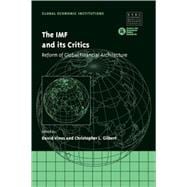
Note: Supplemental materials are not guaranteed with Rental or Used book purchases.
Purchase Benefits
What is included with this book?
| Introduction Christopher L. Gilbert and David Vines | |
| 1. The IMF and international financial architecture: solvency and liquidity David Vines and Christopher L. Gilbert | |
| 2. Progress towards greater international financial stability Andrew Crockett | |
| 3. International coordination of macroeconomic policies: still alive in the new millennium? Laurence H. Meyer, Brian M. Doyle, Joseph E. Gagnon and Dale W. Henderson | |
| 4. The report of the International Financial Institution Advisory Commission: comments on the critics Allan H. Meltzer | |
| 5. Reforming the global financial architecture: just tinkering around the edges? Malcolm Knight, Lawrence Schembri and James Powell | |
| 6. The IMF and capital account liberalisation Dominic Wilson | |
| 7. How should the IMF view capital controls? Gregor Irwin, Christopher L. Gilbert and David Vines | |
| 8. The resolution of international financial crises: an alternative framework Andrew G. Haldane and Mark Kruger | |
| 9. Whose programme is it? Policy ownership with conditional lending James M. Boughton and Alex Mourmouras | |
| 10. Should the IMF discontinue its long term lending role in developing countries? Graham Bird and Paul Mosley | |
| 11. The IMF and East Asia: a changing regional financial architecture Gordon de Brouwer | |
| 12. Argentina and the Fund: anatomy of a policy failure Michael Mussa | |
| 13. Countries in payments' difficulties: what can the IMF do? Andrew Powell | |
| 14. Accountability, governance and the reform of the IMF Ngaire Woods | |
| 15. The IMF at the start of the 21st century: what has been learned? On which values can we establish a humanised globalisation? Michel Camdessus. |
The New copy of this book will include any supplemental materials advertised. Please check the title of the book to determine if it should include any access cards, study guides, lab manuals, CDs, etc.
The Used, Rental and eBook copies of this book are not guaranteed to include any supplemental materials. Typically, only the book itself is included. This is true even if the title states it includes any access cards, study guides, lab manuals, CDs, etc.